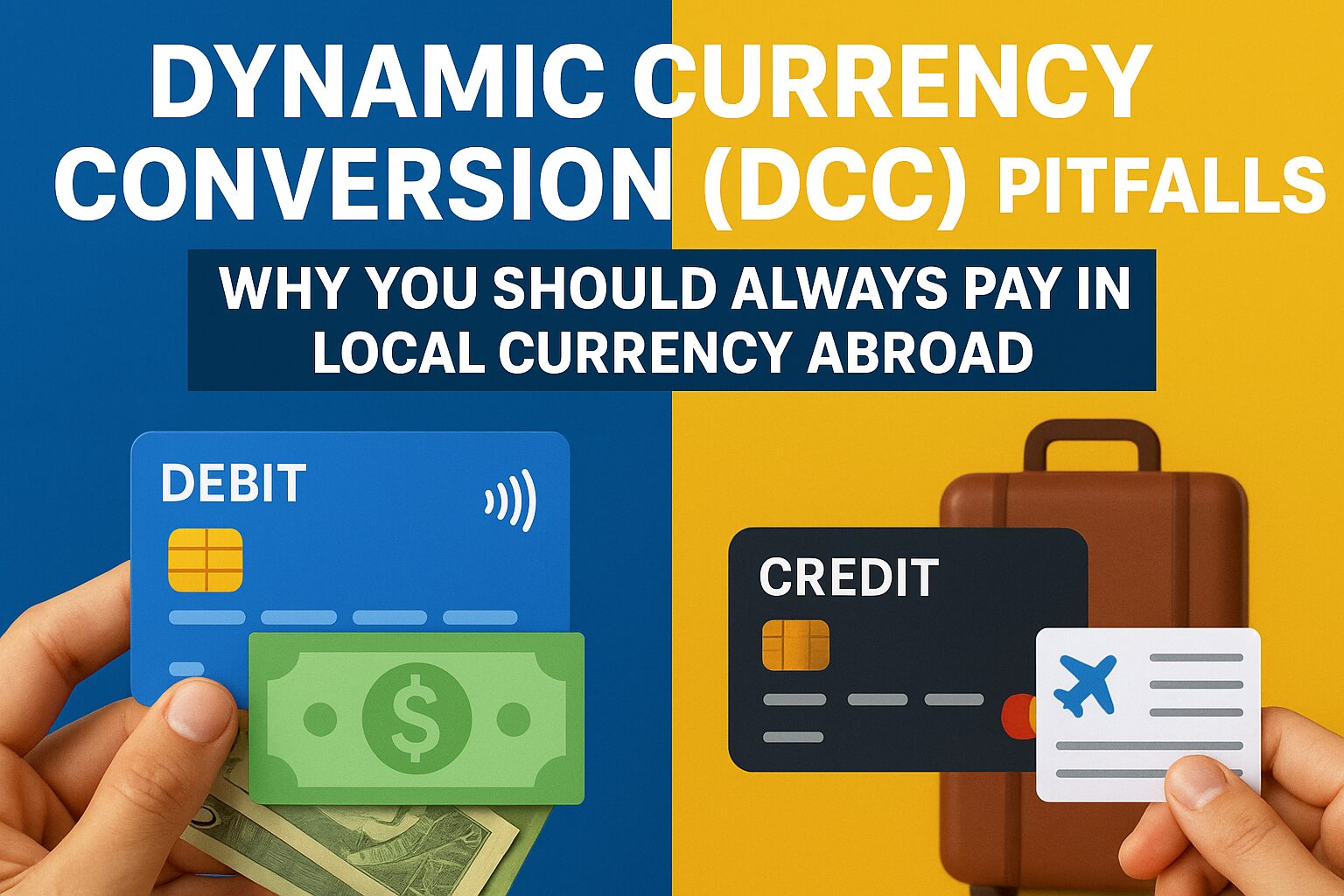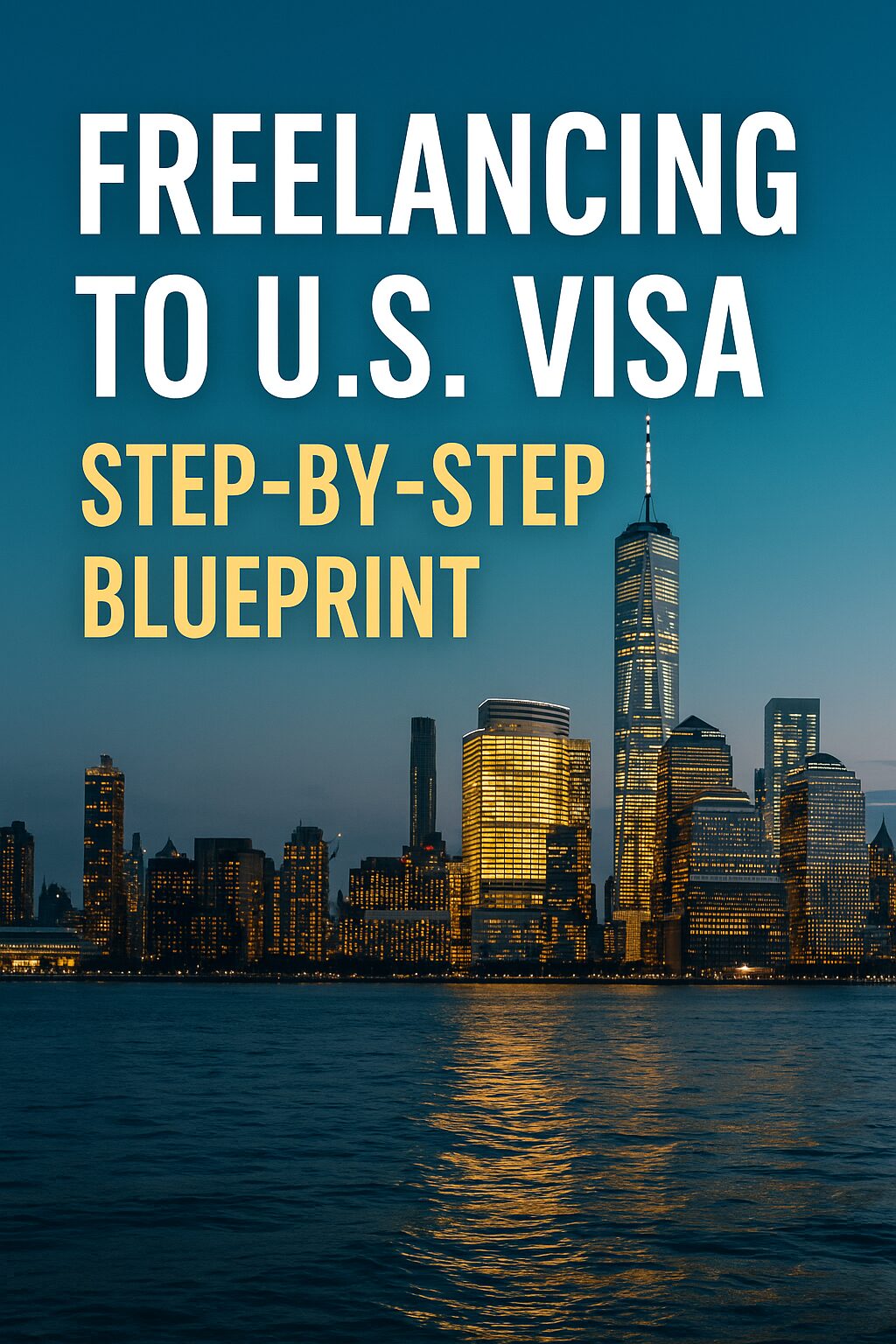The Hidden Trap of “Convenience”
When traveling abroad, few things feel more reassuring than seeing your home currency displayed at a foreign checkout terminal. The clerk or machine politely asks: “Would you like to pay in your home currency?” It sounds convenient—why bother with confusing exchange rates when you can instantly see the amount in familiar dollars, won, or euros?
This practice is known as Dynamic Currency Conversion (DCC), and it has become a common feature at hotels, shops, and ATMs worldwide. On the surface, it promises clarity and convenience. In reality, it is one of the costliest traps a traveler or international student can fall into. By choosing DCC, you often end up paying 3% to 7% more compared to simply paying in the local currency.
This article explores how DCC works, why it persists, and—most importantly—how you can avoid wasting hundreds of dollars in hidden fees every year.
1. What Is Dynamic Currency Conversion (DCC)?
Dynamic Currency Conversion is a service offered by merchants and ATM operators that allows cardholders to see their transactions converted into their home currency at the point of sale or withdrawal.
- Example: You’re in Paris and your dinner bill is €100. At the card terminal, you are asked:
- Pay €100 in EUR (local currency)
- Or pay $112 USD (converted instantly at the terminal’s rate)
Most unsuspecting travelers select USD, thinking it saves them from hidden exchange rates. In reality, this “convenience” comes at a steep price.
How DCC Works Behind the Scenes:
- The merchant’s payment processor sets the exchange rate, often far worse than the interbank rate.
- An additional markup fee (2–5%) is added.
- Your bank may still charge a foreign transaction fee because the purchase is international.
Result: You get the worst of both worlds—bad exchange rates and extra fees.
2. Why Merchants Push DCC So Aggressively
If DCC is such a bad deal for consumers, why do merchants continue offering it? The answer is simple: profits.
- Merchants receive a kickback from the payment processor each time a customer accepts DCC.
- The higher the markup, the bigger the commission.
- Some cashiers are even trained to encourage—or trick—customers into accepting DCC.
Common Merchant Tactics:
- Presenting the DCC option as default, requiring extra steps to decline.
- Telling customers “It’s better for you” or “Your bank charges more.”
- Printing receipts in home currency without even asking.
DCC is essentially a hidden revenue stream for businesses, and travelers who don’t pay attention end up funding it.
3. Real-World Cost Comparisons
Let’s examine a few scenarios to see how much DCC can cost you.
Example 1: Restaurant in Tokyo
- Bill: ¥10,000
- DCC Option: $95 USD
- Local Currency: ¥10,000 → $91 USD (bank rate)
- Overpayment with DCC: $4 (4.4%)
Example 2: Hotel in London
- Bill: £500
- DCC Option: €620
- Local Currency: £500 → €590 (bank rate)
- Overpayment with DCC: €30 (5%)
Example 3: ATM Withdrawal in Bangkok
- Withdrawal: 10,000 THB
- DCC Option: $330 USD
- Local Currency: 10,000 THB → $305 USD
- Overpayment with DCC: $25 (8%)
In each case, the traveler loses significant money for no added benefit. Over a two-week trip, these losses can add up to hundreds of dollars.
4. How Banks and Card Networks Handle Currency Conversion
To understand why paying in local currency is better, let’s compare the systems:
- Visa / Mastercard / Amex / UnionPay
- Convert transactions at the interbank rate, often just 0.2%–0.5% above market rate.
- Transparent and updated daily.
- Your bank may add a small foreign transaction fee (0–3%).
- Dynamic Currency Conversion
- Exchange rate set by the merchant’s processor (often inflated 3–7%).
- Additional markup built into the displayed rate.
- Merchant profit-sharing incentivizes bad rates.
Conclusion: Even if your card charges foreign transaction fees, you’ll still save more by choosing local currency over DCC.
5. Countries Where DCC Is Common
DCC is spreading worldwide, but it’s especially prevalent in:
- Europe: UK, Spain, Italy, France (almost every hotel, restaurant, and shop offers DCC).
- Asia: Thailand, Japan, China, Hong Kong, Singapore.
- Tourist hubs: Airports, duty-free shops, car rental agencies.
- ATMs: Especially in tourist-heavy cities, where DCC is the default option.
Travelers should assume they will face DCC offers multiple times per trip.
6. How to Avoid the DCC Trap
Thankfully, protecting yourself from DCC is simple. Here are the best strategies:
Always Select “Local Currency”
- If in Europe, always choose EUR.
- If in Japan, always choose JPY.
- If in Mexico, always choose MXN.
Train Yourself to Look for Clues
- Watch for the phrase “Pay in your home currency?”
- Decline politely and insist on local currency.
At ATMs
- Always reject the ATM’s currency conversion offer.
- Select “Continue without conversion” if prompted.
With Hotel Bills
- Ask at check-in that all charges be billed in local currency.
- Double-check receipts before signing.
Use a Wise / Revolut / Global Debit Card
- These fintech cards usually auto-convert at interbank rates, protecting you from DCC.
- Pair them with local-currency payments for maximum savings.
7. The Psychology of DCC – Why People Still Choose It
It’s easy to wonder why travelers keep falling into the DCC trap. The answer lies in psychology:
- Familiarity Bias: Seeing your home currency feels safer and less confusing.
- Fear of Hidden Fees: People assume their bank will charge more than DCC.
- Language Barriers: Unsure of what they’re agreeing to, many just click “OK.”
- Convenience Illusion: The word “convenience” hides the underlying cost.
By understanding these biases, you can consciously override them and make the smarter choice.
8. DCC and Digital Wallets – Are You Safe?
What if you use Apple Pay, Google Pay, or Samsung Pay abroad?
Unfortunately, DCC still applies, because the merchant terminal processes the transaction. Even if you tap with Apple Pay, if the terminal is set to DCC, you pay the inflated rate.
Rule: Whether using physical cards or mobile wallets, always choose local currency.
9. Case Study: A Frequent Traveler’s Annual Losses
Let’s calculate:
- Average traveler spends $5,000 abroad yearly.
- If DCC inflates costs by 5%, that’s $250 lost per year.
- A frequent business traveler spending $50,000 abroad loses $2,500 per year.
This explains why banks, merchants, and processors push DCC so aggressively—it’s a billion-dollar global revenue stream.
10. Final Checklist – Protect Yourself from DCC
Before your next trip abroad, remember:
Always pay in local currency
Decline DCC at ATMs and hotels
Use cards with no foreign transaction fees
Educate travel companions (so they don’t unknowingly accept DCC)
Double-check receipts before signing
By following these rules, you’ll keep more money in your pocket and avoid one of the most common travel finance traps.
Conclusion: Keep Your Money, Not Their Profits
Dynamic Currency Conversion is not a traveler-friendly service—it’s a merchant profit machine disguised as convenience. By staying alert, saying “No” to DCC, and always paying in local currency, you can save hundreds of dollars every year.
Remember: Knowledge is the ultimate travel hack. The next time a cashier or ATM offers you the “easy way” in your home currency, smile politely, and decline. Your bank account will thank you.
In our next article, we’ll explore “The Ultimate Guide to Multi-Currency Accounts – One Wallet for All Your Global Needs.”
You’ll discover how savvy travelers, digital nomads, and investors use multi-currency accounts to cut conversion fees, secure better exchange rates, and unlock financial freedom across borders.









